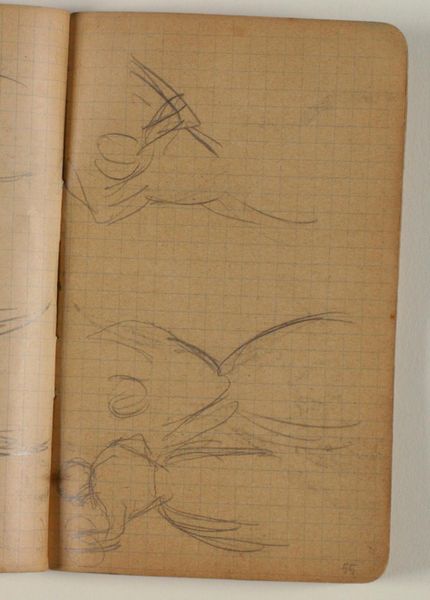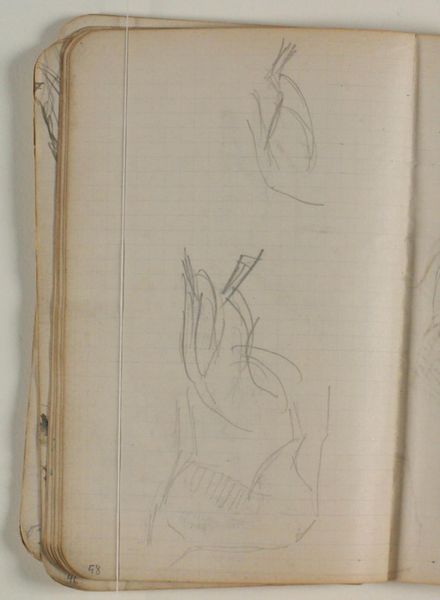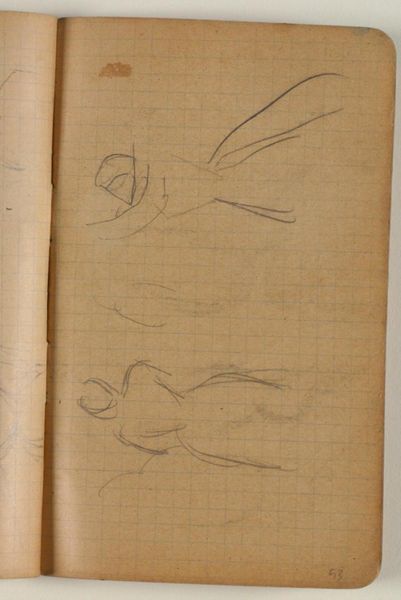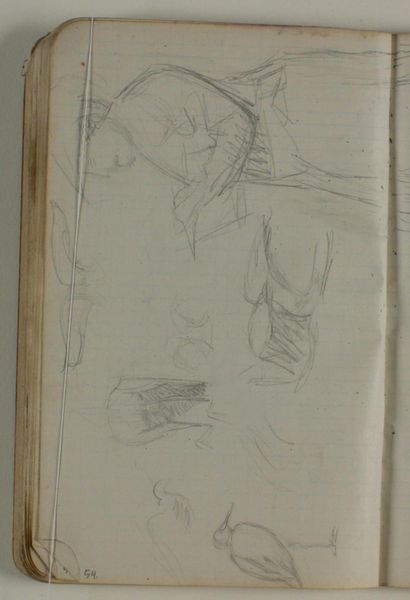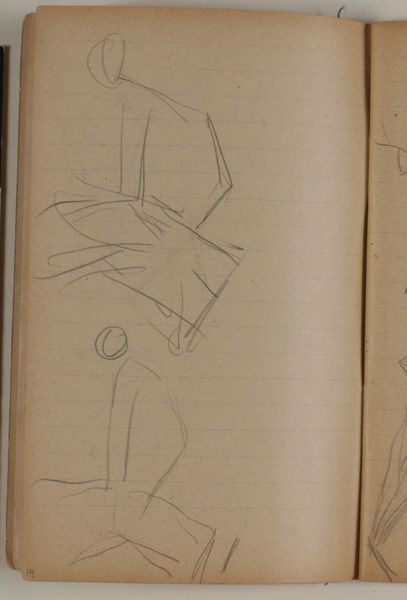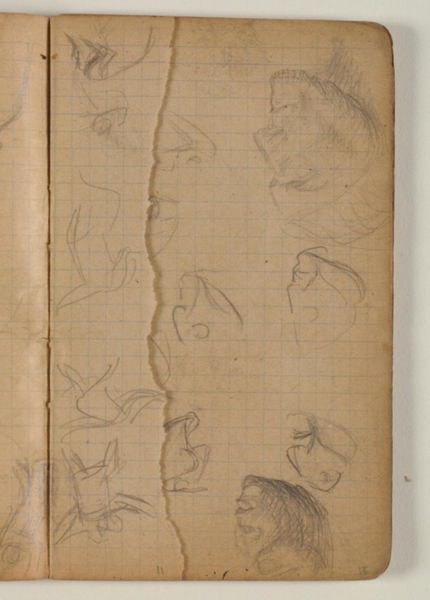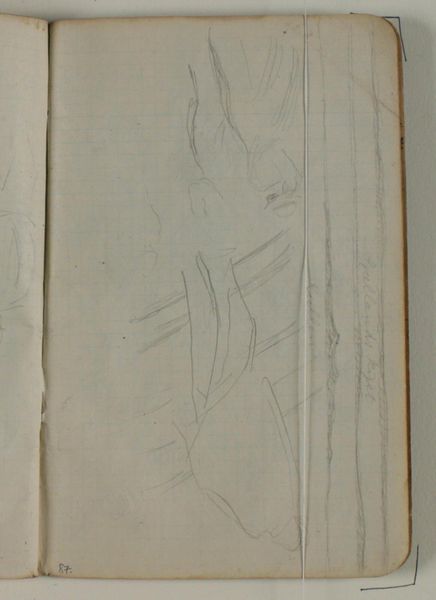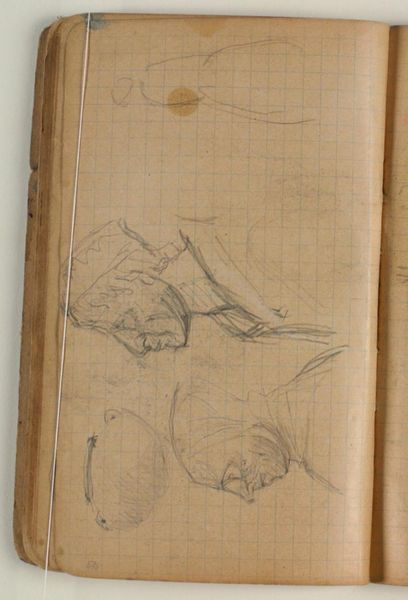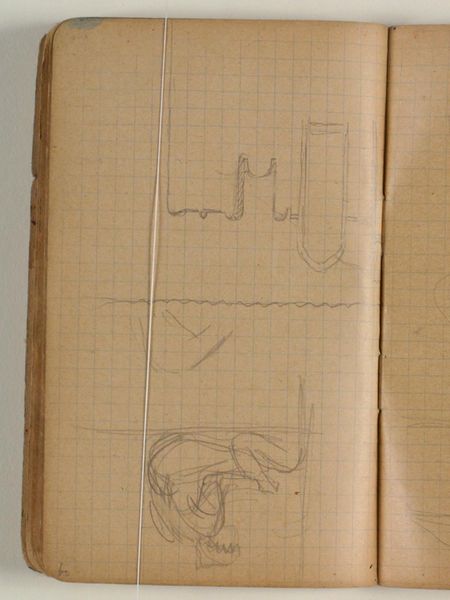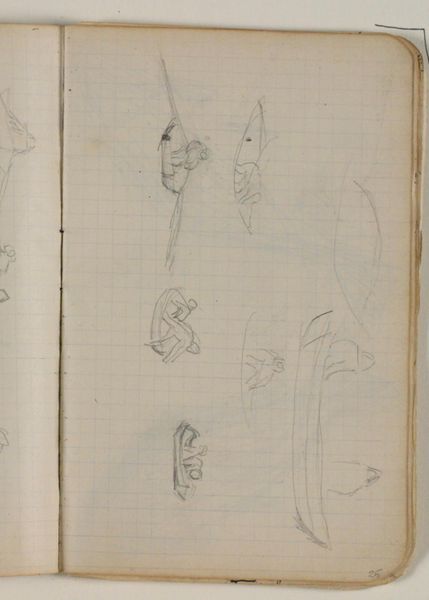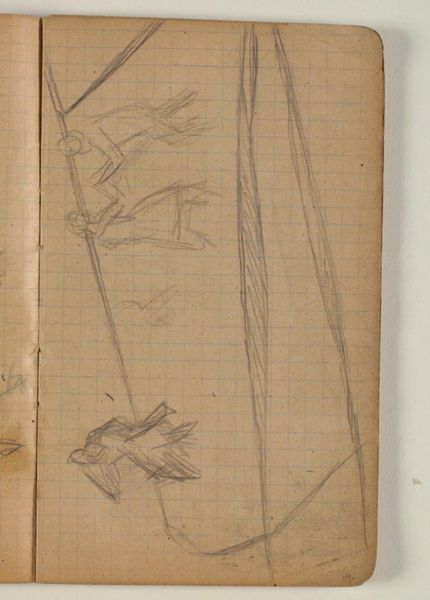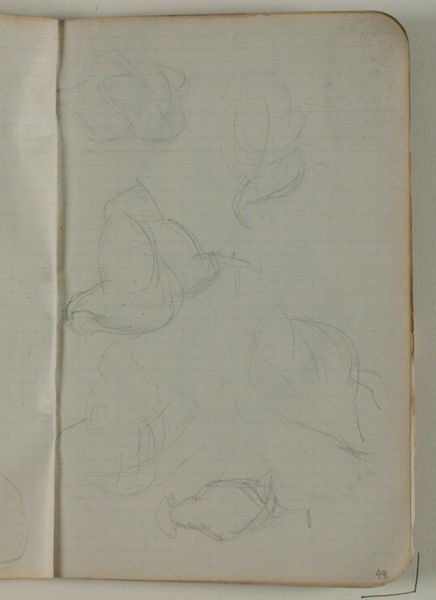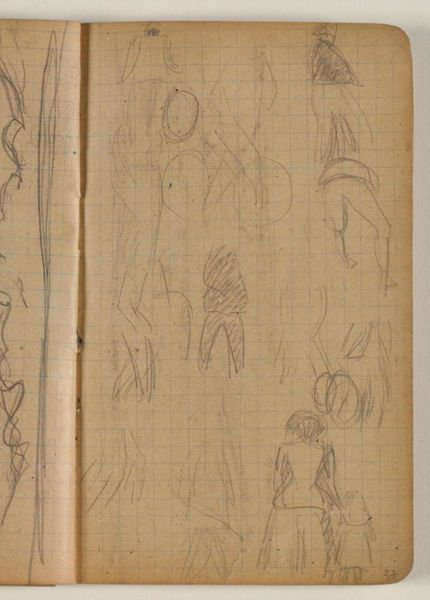
Dimensions: 163 mm (height) x 97 mm (width) (bladmaal)
Curator: Here we have Niels Larsen Stevns' "Skitser af (dansende?) kvinde," or "Sketches of (Dancing?) Woman," rendered in pencil on paper around 1906. What's your initial take on this fleeting study? Editor: It's wonderfully raw and unfinished. I see this struggle for form, bodies in motion—or perhaps being constrained? The grid behind the sketches makes me think about the social constraints placed on women's bodies and movement. Curator: It's fascinating you perceive constraint, given that dance is about freedom of movement. Yet, Larsen Stevns provides the image with a tension, even an ambiguity about it; an unfinished impression of dancers. This can carry an emotional and even psychological element: freedom from social restraint may still struggle with some constraint within. Editor: I appreciate your perspective on freedom struggling against internal limitations, I'm curious: Is the symbol of dance itself potentially problematic here? For instance, throughout the late 19th and early 20th centuries, wasn't the dancing woman a recurring trope, frequently associated with femininity, performance, and sometimes exploitation? How might we examine those intersectional meanings in this artwork? Curator: An important observation. Indeed, the period did exoticize women's movement on stage; perhaps the artist tries to move away from those associations by marking the figure's movements roughly—noting it with only tentative outlines as to not objectify the dancer by fully revealing her. These aren't pristine academic drawings; the sketchbook nature creates an intimacy. The tentative question mark in the title itself may hold some element of hesitancy in objectifying the portrayed dancer, and not simply viewing them in an idyllic, or even worse, overly sexualized, manner. Editor: Precisely. The tentativeness can become a means of disrupting conventional, restrictive portrayals. And I wonder how seeing dance here—the movement of the body—can invite consideration for topics such as liberation, body positivity, or even the historical oppression of gendered forms of expression. Curator: Right; seeing sketches lets us, in a way, glimpse at his raw impression of a certain social view of dancers—or dancing—at the time, a view marked by both constraint and liberty. That is, the lack of firm commitment to either is where meaning, I think, reveals itself. Editor: An artist responding to gendered cultural associations in real-time… I find that idea particularly engaging and indicative of Stevns’ approach. Curator: Yes, perhaps Stevns has invited a longer gaze not simply at dancers—but on dance's significance and meaning at the time of early modern art.
Comments
No comments
Be the first to comment and join the conversation on the ultimate creative platform.
